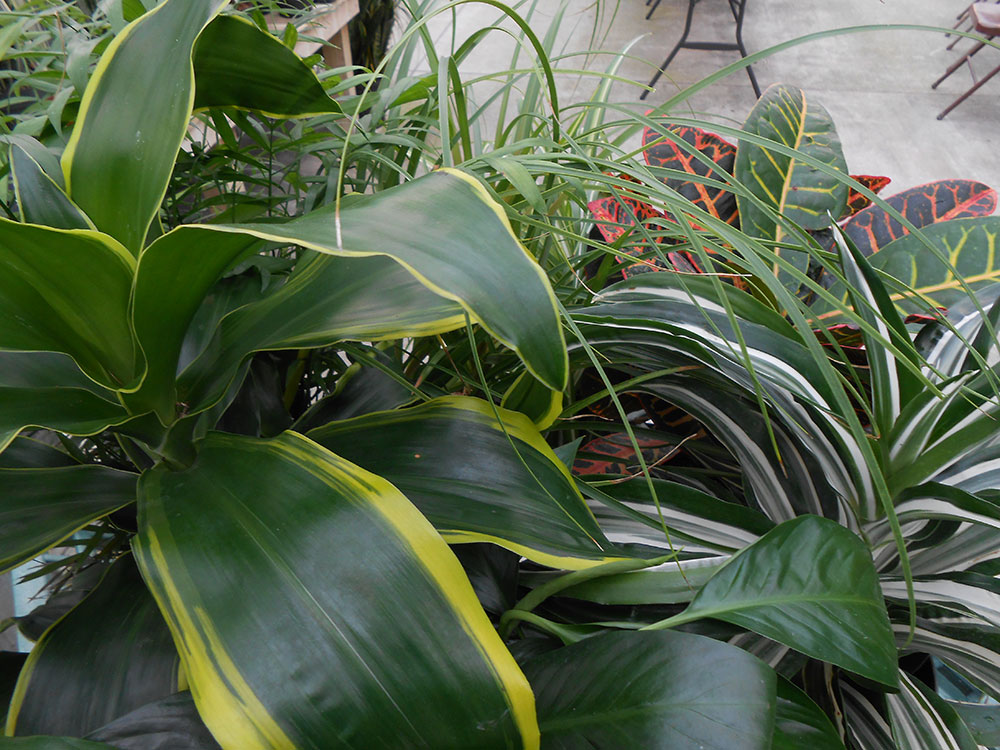What do Corn Plants, Dragon Trees, and Lucky Bamboo have in common? They are all members of the Dracaena family. Dracaenas are a family of herbaceous plants that are, believe it or not, related to Asparagus!
The name “Dracaena” comes from the Greek word “Drakaina” meaning Female Dragon. Some varieties of dracaena have a reddish sap that ancient Greeks thought looked like dragon’s blood. (How did they know what dragon’s blood looked like?)
Dracaenas are some of the most commonly grown indoor plants—because they are easy and tolerant of a wide variety of conditions. There are just a few things they don’t tolerate well. They do not like temperatures below the mid-fifties, so place them away from outside doors where cold drafts might hit them. Most of them do not like soggy roots, so be careful to let them dry out fairly well between waterings. And fluoride in our tap water can sometimes cause discoloration to the foliage, so using rainwater or bottled water—at least occasionally—can help prevent this.
Some Common Dracaena Varieties
- Dracaena Fragrans (Corn Plant) — wide green strap-like foliage, often with a brighter greenish-yellow stripe down the middle.
- Dracaena Deremensis “Janet Craig”—glossy dark green foliage.
- Dracaena Warneckii—beautiful mint-green foliage with white stripes down the margins.
- Dracaena Lemon-Lime—bright chartreuse green leaves with a darker green stripe in the middle.
- Dracaena Marginata (Madagascar Dragon Tree)—long thin foliage, often with a reddish stripe down the sides.
- Dracaena braunii (Lucky Bamboo)—yes, the Lucky Bamboo is not a bamboo at all but a dwarf variety of Dracaena! This is one that will tolerate growing in water and pebbles. (Interesting note: the number of stems you place in a container can have different meanings. Two represent love; three represent happiness; four is considered unlucky, etc.)
- Pleomele Reflexa aka Dracaena Reflexa—short, narrow, pointed leaves arranged spirally on stems.
- Pleomele Reflexa “Song of India”—same as above but with yellowish-green stripes on the leaves.
Some dracaenas will tolerate low to moderate light very well—particularly Corn Plants, Warneckiis, and Janet Craigs. Allow them all to dry out almost completely between waterings.
The other varieties of dracaena will do better in moderate to brighter indirect light. Again, allow to dry out almost completely between waterings.
Whichever varieties you choose, they are all easy-care indoor plants. A bonus here–they are particularly good at cleaning certain toxins (like benzene and formaldehyde) from the air!

